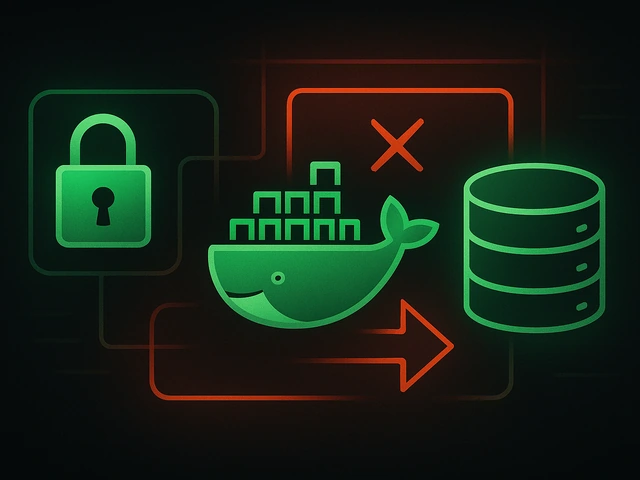
You will find the complete technical guide to building your own Discord bot from scratch here. This in-depth article will thoroughly guide you through every ste...
3v-Hosting Blog
10 min read
The rapid evolution of computing workloads - from real-time video rendering and artificial-intelligence training to 3D simulation and blockchain analytics - has pushed traditional CPU-based servers to their limits. To meet these new demands, dedicated GPU servers have become a cornerstone of modern high-performance infrastructure. They deliver massive parallel computing power, precise resource isolation, and predictable performance for enterprises, researchers, and developers alike.
A dedicated GPU server is a physical machine equipped with one or more professional-grade graphics processing units directly attached to its motherboard via PCI Express. Unlike shared cloud instances or virtual GPUs, this setup provides exclusive access to the hardware.
Each server typically includes:
- Multi-core CPUs for orchestration and I/O handling,
- High-bandwidth system RAM,
- One or several GPUs - for example NVIDIA A100, L40S or AMD MI210,
- NVMe storage or parallel SSD arrays, and
- 10 Gbps or higher network interfaces.
The defining advantage of a GPU lies in its architecture. A single GPU may host thousands of lightweight cores that can execute the same instruction on large datasets simultaneously, a paradigm known as SIMD (single-instruction, multiple-data). While a CPU might excel at sequential, logic-heavy operations, a GPU dominates in parallel math operations such as matrix multiplications or tensor computations.
The result: tasks that might take hours on CPUs can often be completed in minutes with a properly optimized GPU workload.
Public clouds make GPU capacity easily accessible, but shared or burstable instances have limitations. Virtualized GPUs often experience variable performance because hypervisors must balance multiple tenants. In contrast, a dedicated GPU server ensures that the entire compute power, memory bandwidth, and VRAM remain under a single user’s control.
This isolation provides three critical advantages:
Deterministic performance – no resource contention from neighbors.
Cost predictability - flat monthly billing instead of volatile per-minute charges.
Hardware customization - choice of specific GPU models, RAM sizes, and storage configurations.
Hosting providers typically locate such servers in high-availability data centers with redundant power, cooling, and network routes, making them suitable for persistent workloads like continuous machine-learning training or high-traffic rendering pipelines.
One of the most prominent uses of GPU servers is AI training. Neural networks rely on linear algebra operations across millions of parameters, perfectly suited for GPU acceleration. Training a transformer-based model or a convolutional neural network requires massive matrix computations that scale linearly with model size.
Dedicated GPU servers equipped with high-end cards - such as the NVIDIA H100 Tensor Core GPU or A100 - offer hundreds of teraflops of performance. Multi-GPU systems linked via NVLink or PCIe 4.0 achieve even higher throughput and memory sharing, allowing the training of billion-parameter models that would otherwise be infeasible on consumer hardware.
In machine-learning pipelines, GPUs are used not only for training but also for inference, the stage where models make predictions. Hosting inference endpoints on GPU servers significantly reduces latency for AI-powered applications like chatbots, recommendation systems, or real-time computer-vision analytics.
Beyond classical AI, data-intensive domains benefit equally from GPU acceleration. Frameworks such as RAPIDS AI, cuDF, and Dask GPU offload dataframe operations, statistical computations, and graph analytics to GPU memory. Tasks like correlation analysis or clustering of hundreds of millions of data points become practical on a single workstation-sized server.
Visualization pipelines in scientific research - for example, computational fluid dynamics or molecular simulations - also rely heavily on GPUs. Rendering volumetric data, fluid motion, or particle interactions demands a throughput that CPUs alone cannot sustain. With modern GPU servers, scientists can interactively explore terabytes of results without offloading to external render farms.
The video-production industry has long exploited the parallelism of GPUs. Encoding, decoding, and frame-by-frame processing can be massively parallelized across thousands of cores.
A dedicated GPU server can accelerate:
Non-linear editing and compositing in DaVinci Resolve or Adobe Premiere,
3D rendering in Blender, Maya, or Cinema 4D,
Game cut-scene or cinematic rendering pipelines, and
Live-stream transcoding for Twitch or YouTube channels.
Thanks to NVENC and AMF hardware encoders, GPU servers handle multiple concurrent H.264 or HEVC streams with negligible CPU overhead, making them ideal for media distribution platforms.
Modern gaming servers require more than raw CPU speed - they must handle real-time rendering, physics calculations, and sometimes even ray tracing. Dedicated GPU servers allow studios to host cloud-gaming environments, where frames are rendered on the server and streamed to clients.
Virtualization technologies like NVIDIA vGPU and AMD MxGPU make it possible to allocate fractional GPU cores to separate virtual machines. In enterprise setups, this enables developers to create virtual workstations where designers, 3D artists, or CAD engineers can access high-performance environments remotely through RDP or Citrix protocols.
GPUs’ ability to perform trillions of hash computations per second made them popular in blockchain networks. Although large-scale cryptocurrency mining has migrated toward specialized ASICs, GPUs remain indispensable for research, smaller alt-coins, and zero-knowledge proof computations.
In financial modeling, GPU-based Monte-Carlo simulations can calculate risk or option-pricing scenarios thousands of times faster than CPU clusters, enabling real-time decision-making for trading systems and quantitative analysts.
High-energy physics, genomics, weather forecasting, and space exploration all rely on simulation models involving billions of equations. Dedicated GPU servers offer the double advantage of parallel math performance and controlled on-premises environments where datasets may contain confidential or export-restricted material.
For instance, molecular dynamics packages like GROMACS or AMBER scale nearly linearly across multi-GPU systems, while deep-space observation projects use GPUs for real-time image reconstruction and noise filtering of telescope data.
While a single GPU server may appear expensive compared to a CPU-only machine, its performance-per-watt and performance-per-dollar metrics are often superior for parallel workloads. Renting a dedicated unit removes the initial CAPEX burden of purchasing high-end cards and ensures predictable OPEX through monthly billing.
Providers located in energy-efficient European data centers often balance power cost, cooling, and carbon footprint - an important factor as sustainable computing becomes a business priority.
Demand for GPUs has surged dramatically with the explosion of AI applications, high-definition content, and edge computing. According to recent statistical research, the global GPU market is experiencing both shortages and technological transformation as vendors race to supply AI-capable hardware to data centers worldwide.
This trend has a direct impact on hosting services: the scarcity of top-tier GPUs like H100 and L40S drives higher rental rates, while mid-range GPUs become attractive for developers testing smaller models or graphics pipelines. Providers are also experimenting with clustered GPU nodes and high-speed interconnects (NVLink, InfiniBand) to meet scalable training needs.
Running AI or compute workloads on dedicated hardware introduces specific security and management challenges. Administrators must monitor:
- GPU temperature and power draw to avoid thermal throttling,
- driver versions and CUDA libraries for compatibility, and
- firmware updates to mitigate vulnerabilities.
Automated monitoring with Node Exporter or NVIDIA DCGM integrated into Prometheus can alert operators before hardware degradation occurs. Some enterprises also isolate GPU servers within dedicated VLANs and apply strict firewall rules to protect intellectual property and training datasets.
As computing continues its transition from general-purpose CPUs to domain-specific accelerators, dedicated GPU servers are positioned to remain the workhorses of data-intensive industries. Emerging architectures - including chiplet-based designs and hybrid CPU/GPU SoCs - will further reduce latency between processor types and increase memory bandwidth.
Simultaneously, software ecosystems such as CUDA, ROCm, TensorRT, and OpenCL will continue to evolve toward greater interoperability. These advancements make dedicated GPU servers a future-proof investment for companies building AI products, visual platforms, and scientific applications.
Dedicated GPU servers represent a fusion of raw processing power, hardware isolation, and scalability. They have moved far beyond their origins in graphics rendering and are now indispensable in AI training, data science, video production, and scientific research. Whether deployed in a colocation facility or leased from a specialized hosting provider, these servers enable organizations to accelerate innovation and handle the most complex computational tasks of the modern digital era.

Learn how IP addresses work: IPv4 vs IPv6, public and private IPs, DNS resolution, routing, security basics, and how IPs are used in real server and cloud infra...

Accelerating WordPress at the Nginx level: correct PHP-FPM settings, try_files, static files, caching, Brotli, wp-login protection, and secure headers for stabl...

Effective backup strategies for Docker applications: how to protect volumes, data, and configurations while avoiding common mistakes, and quickly restore servic...